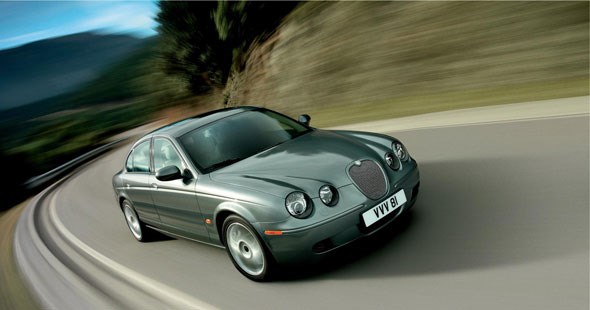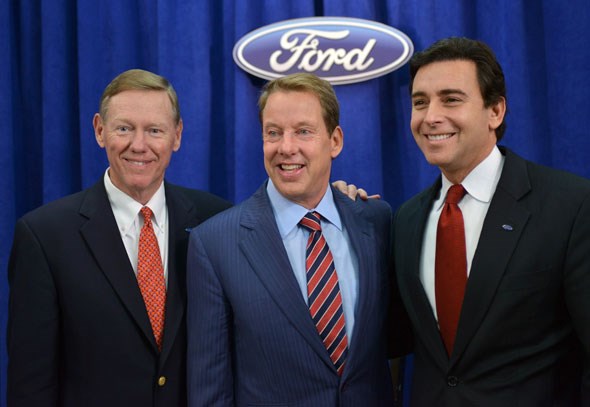Mark Fields took over as CEO of Ford on 1 July 2014, replacing Alan Mulally. CAR magazine caught up with Fields shortly before he took over as the new Ford boss to find out what drives him – and spoke about his time running the now-defunct Premier Automotive Group, including stints overseeing Aston Martin, Jaguar, Land Rover and Mazda. It’s illuminating reading: Fields tells us how Ford considered basing Land Rovers on Ford SUVs and reveals how Ford found buyers for the Premier Automotive Group. Read on for extracts from our full interview.
Mark Fields: this much I know
‘I’ve had the opportunity to do a lot of things, and some of it was luck. Luck is the intersection of preparation and opportunity. I’ve often taken on the less sexy assignments, stuff that needed fixing. I wanted to contribute to the company and learn and grow.
‘I started at IBM, went back to business school and then came to Ford because I love cars. I bought a 1983 Datsun 280ZX – and I had to live at home to afford it! I still have that car.’
How Mark Fields became CEO of Ford
‘I love the product and I love the autos business. It’s the competition of the ultimate consumer product, in terms of brand, building the brand, getting consumers to consider that product. That was my functional skill in marketing. It’s the ultimate industrial product in how it comes together.
‘What changed my trajectory is that I went overseas. Lived in the UK for three years, Japan for four years, south America for two years. It changes your world view. I’m a type-A person: I wasn’t the best listener when I left the US… ‘
Mark Fields on his time at Mazda
‘Mazda was in big financial difficulty. It had expanded its sales channels and wanted to fill them with not badge-engineered product. We spent a lot of time getting the business in order and on the product. We went back to Mazda’s roots. We’d lost the DNA in the fog of going for growth. We had two years with no product in the marketplace, then the 6, 3 and RX-8 came. The RX was the longest reveal in history! We had a plan but it was going to take three to four years to come to fruition. What else did we have to talk about… We showed it everywhere!
‘My luck? I was Mazda’s global sales and marketing director. A year into the job, Mazda’s CEO had health problems and I was asked to be CEO. In Japan, it was a case of change or die. The MD dealt with the strategy stuff; I wanted to focus them on the entire business, so we could spread the message.
‘I used my interpreter at Mazda as a sounding board. He kept me humble, to make sure I was connecting with my senior team, to ensure I was effective and motivating. Then one day I was meeting suppliers, and Nick Scheele called: “Wolfgang Reitzle has left the company, and we need someone to run the Premier Automotive Group (PAG). Can you give me an answer by Monday?”’
Premier Automotive Group and Mark Fields
‘We had to make decisions about what we were going to commonalise. Business practices, product lines without losing the brand position of Volvo, Jaguar, Aston. It was a fascinating and very fulfilling experience. There was a restructuring plan for Jaguar at the time, closing Browns Lane. I learned the luxury business: design, development, manufacturing and marketing.

‘We went down to the design showroom to give our perspective on the body-in-white of the refreshed S-type. I remember being told why parts were different and designed the way they were: stuff like the inner door sill… There are things in the business where scale is important: component cost to deliver good value for the consumer but a good return for the company, and certain areas where it’s important not to chase cost. You have to protect the brand while driving revenue: that was a good leadership experience. Jaguar and Land Rover were two very different cultures: how could you bring them together to focus on a common goal, for each business to do well?’
Making Volvos safer, the Jaguar X-type experience – and fixing Land Rover
‘I came in 2002: the plan was for PAG to offer one-third of company profits by 2005. Great products, but we learned some lessons! How do we get them to work together? Provide the bottom line but not violate what delivers for each brand’s customers. At Volvo we were making the plan to adapt Ford plaftorms. The length between the engine bay/cowl had to meet Volvo crash standards, so the engine did not intrude. When you increase that distance, there’s a cost involved.
‘At Land Rover we had a product plan and had just launched Range Rover, but in my first week they declared the launch of the all-aluminium XJ was going to be four months late. How would we launch Range Rover Sport and flesh out the product line-up? We were developing LR3 [the Discovery] – how could it be true to the brand? We put the cost in for a rugged 4×4 system taking 30-degree angles and wading capability. We had discussions about taking the Explorer platform, but that would not have delivered Land Rover capability. It was about growing the business while getting as much brand commonality as we could.
‘Jaguar was in very bad shape. We had too much capacity, a vehicle line up that didn’t deliver the brand, we were smack in the middle of the X-type experience. It was a real lesson for us: badge engineering to turn a Ford into a Jaguar – extra leather isn’t going to cut it! There was a complete restructuring of the business, developing the XF and new XJ, and we had to make the decision to close Browns Lane. How do you make that business work?’
Mark Fields on selling Aston Martin, Volvo, Jaguar and Land Rover
‘Hindsight is a beautiful thing. I spent time on those brands, have friends there but we had to make the fundamental decision to focus on Ford. We had to divest ourselves of those wonderful brands but for the right reason. Do I have business regrets? Absolutely not. Do I have emotional ones? Yes. I wouldn’t be human if I didn’t feel that. Everybody came out of the woodwork in the sale process, but we wanted to choose someone who would invest in the business and deliver our plans.’
Mark Fields: back to run Ford Americas
‘Bill Ford called one day: would you come back to run North/South America. We’ve got a lot of problems. In 90 days, they expected a plan from me and my team. The business was deteriorating at such a rate, if we didn’t get our act together, the business would have slipped even further. The Way Forward [recovery plan] centered on product, brand and cost. Then we found the market was falling even faster, so we went back and changed some elements of the plan. We had to forget about ego. The Way Forward plan was focused on North America. What Alan Mulally did when he came in was to take it global: we couldn’t have executed it without him.

‘When he arrived, the way we ran the company was very regional – the product plan, sourcing – Alan forced us to work together. He focused on the Ford and Lincoln brands, and found the right buyers for our other businesses. We wanted to provide a full family of vehicles wherever we do business. To do that and get into markets more quickly, we had to go to global engineering and global platforms. Define your product approach: best in class for fuel efficiency, safety, smart technology.’
Mark Fields as CEO: the challenge of running Ford globally
‘How do we structure the business to survive stress tests, like the lowest industry market in 25 years? The way we are working on the cost side, leading with product and on the brand side, we get to drive revenue first and foremost. We think it’s a good plan but we stress test it in our Thursday meetings. We run the company in a very different way to how we’ve run it before. We get together as a product team, every week sitting around with business units and skill teams. The first slide everyone shows is a business environment slide: market, competition, government. It’s a wonderful mirror to see and ask: do we need to do more, or can we accelerate?
‘We are going through tough times in Europe, losing money, but for six of the last nine years we have made money in Europe.’